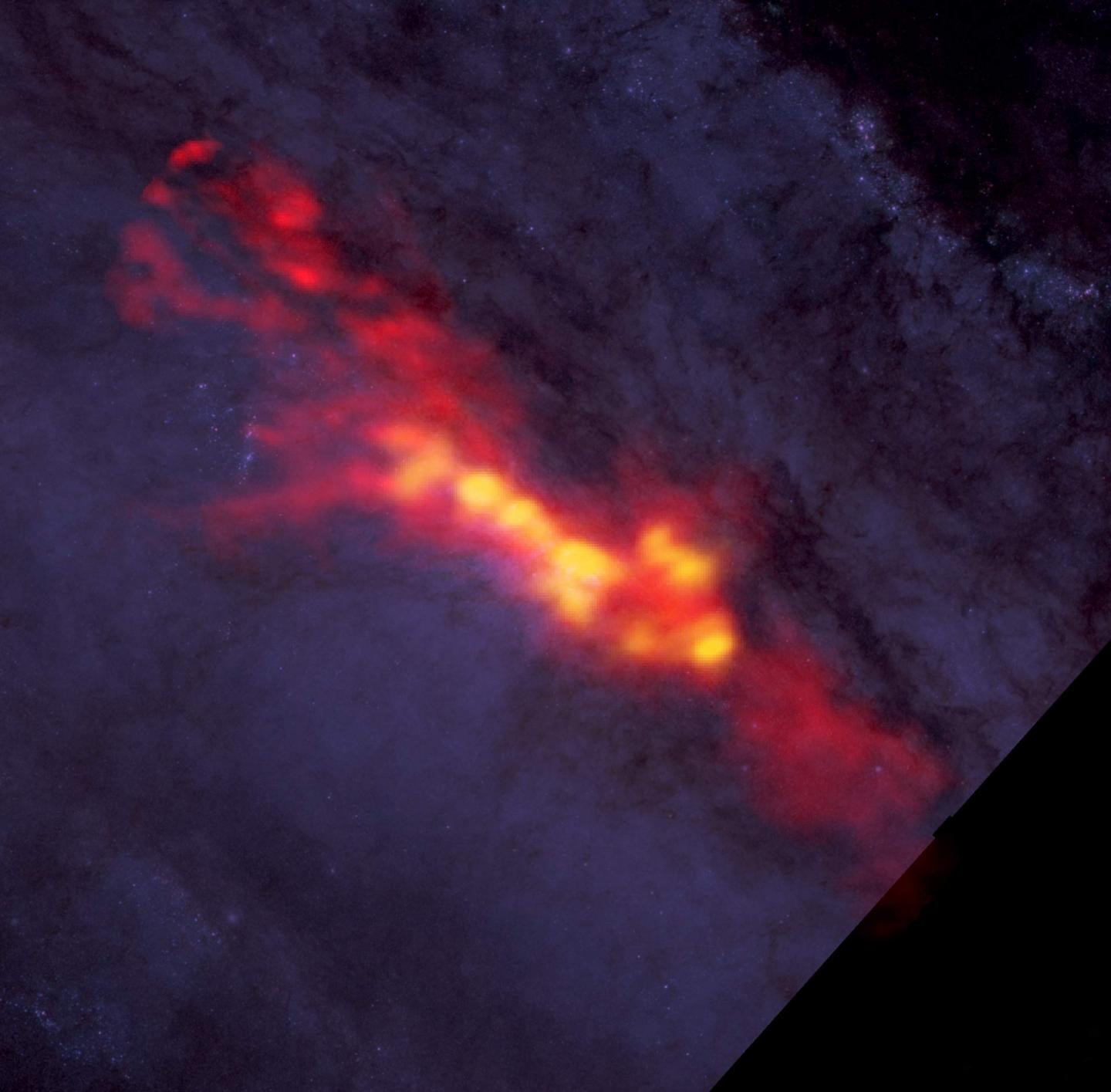What Makes Starburst Galaxies Spawn at a Frenzied Pace? (Video)
Astronomers have peered into the heart of a nearby starburst galaxy to better understand what powers its intense bouts of star formation.
"All stars form in dense clouds of dust and gas," Adam Leroy, formerly of the National Radio Astronomy Observatory in Virginia and now with Ohio State University, said in a statement. "Until now, however, scientists struggled to see exactly what was going on inside starburst galaxies that distinguished them from other star-forming regions."
Leroy headed a team that used the Atacama Large Millimeter/submillimeter Array (ALMA) in Chile to examine the center of NGC 253, one of the closest starburst galaxies to Earth. The science team used the observations to create a video tour of the starburst galaxy NGC 253.
Starburst galaxies form stars at a dizzying pace — in some cases, 1,000 times as fast as typical spiral galaxies such as our own Milky Way. This degree of unsustainable stellar production is not a long-term feature of the galaxy but rather a phase, often caused by galaxy mergers or other influxes of material.
NGC 253, also known as the Sculptor Galaxy, lies approximately 11.5 million light-years from the Milky Way, close enough for an in-depth examination by Leroy and his team.
"There is a class of galaxies and parts of galaxies — we call them starbursts — where we know that gas is just plain better at forming stars," Leroy said in the statement. "To understand why, we took one of the nearest such regions and pulled it apart, layer by layer, to see what makes the gas in these places so much more efficient at star formation."

Using the giant ALMA radio telescope, a system of radio dishes in Chile's Atacama Desert, the scientists were able to resolve stellar nurseries that other ground-based instruments blurred together. The team identified 10 distinct giant molecular clouds where star formation peaked.
Get the Space.com Newsletter
Breaking space news, the latest updates on rocket launches, skywatching events and more!
Leroy and his colleagues then mapped about 40 signatures created by tracer molecules inside NGC 253. Because different molecules correspond to different conditions, the scientists were able to map the starburst region as a whole. For instance, while hydrogen cyanide (HCN) suggests dense zones of active star-formation regions, rarer molecules such as H13CN and H13CO+ indicate regions of even greater densities.
Comparing the concentration, distribution and motion of the molecules revealed that the 10 star-forming nests of the NGC 253 are far more massive, 10 times denser and much more turbulent than similar clouds in normal spiral galaxies.
The results suggest that the production rate of new stars depends not just on the stellar nurseries but the conditions that make up those regions. Starburst galaxies show distinct physical differences in the star-formation process compared to their more sedate neighbors.
"These differences have wide-ranging implications for how galaxies grow and evolve," Leroy said. "What we would ultimately like to know is whether a starburst like Sculptor produces not just more stars, but different types of stars than a galaxy like the Milky Way. ALMA is bringing us much closer to that goal."
Leroy presented his research, which has been accepted for publication in The Astrophysical Journal, at the American Association for the Advancement of Science meeting in San Jose, California. You can read the paper for free at the online preprint site arXiv.
Follow us @Spacedotcom, Facebook or Google+. Originally published on Space.com.
Join our Space Forums to keep talking space on the latest missions, night sky and more! And if you have a news tip, correction or comment, let us know at: community@space.com.

Nola Taylor Tillman is a contributing writer for Space.com. She loves all things space and astronomy-related, and enjoys the opportunity to learn more. She has a Bachelor’s degree in English and Astrophysics from Agnes Scott college and served as an intern at Sky & Telescope magazine. In her free time, she homeschools her four children. Follow her on Twitter at @NolaTRedd









